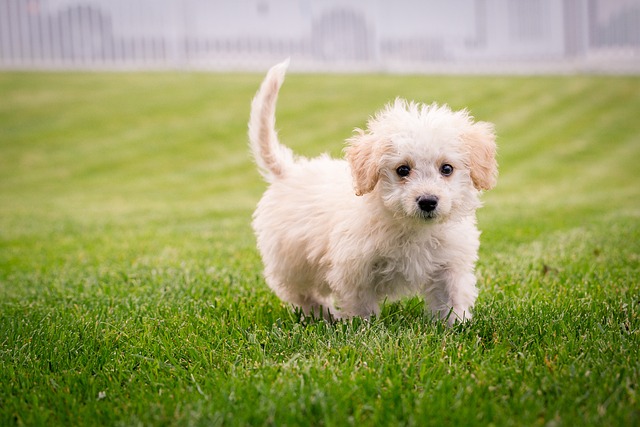
How do i train my dog to be obedient?
Watching your dog dart across the park ignoring your calls isn’t just frustrating—it can put them at risk near busy streets or public spaces.
When a dog's lively figure leaps into our lives, it instantly adds countless joys and warmth to our ordinary days. Their bright eyes and wagging tails can easily melt our hearts. However, training a dog to develop good toileting habits is a challenge that every dog owner must face. This not only concerns the tidiness of the home environment but also enables the dog to thrive in a regular and orderly life. So, what are the effective methods for dog toilet training?
First of all, a deep understanding of a dog's physiological habits is the key to successful training. Like humans, dogs have a biological clock. They usually have the need to defecate or urinate some time after eating, drinking, and waking up. Generally, a puppy may need to use the toilet within 15 - 30 minutes after eating. At the same time, dogs also have an instinctive tendency to excrete in a fixed place, which we can skillfully utilize to guide them.
Selecting a suitable toilet area for the dog is of great importance. This area can be a corner of the balcony at home, a specific area in the bathroom, or a small patch of grass outdoors. Once selected, do not change it easily, so that the dog can form a stable memory. If you choose indoor training, prepare some old newspapers or special pet pee pads and lay them in the designated area. The special smell emitted by these items can attract the dog to go there. If it is outdoors, choose a relatively quiet, secluded, and easy - to - clean place where the dog can defecate comfortably.

During the training process, observing the dog's behavioral signals is the basis for timely guidance. When a dog shows actions such as sniffing the ground, circling, wandering in the corner, or squatting down, these are all signals that it is about to defecate. Once you catch these signals, quickly and gently lead the dog to the designated toilet area. At the same time, use a gentle but firm tone to say some fixed guiding words, such as "Go poop" or "Pee here". At the beginning, the dog may not understand these commands, but with repeated guidance, they will gradually associate the language with the defecation behavior.
The reward mechanism plays a significant role in dog toilet training. When a dog successfully defecates in the designated area, immediately give it its favorite snacks as a reward, such as chicken jerky or cheese cubes. At the same time, praise it with enthusiastic words, like "Baby, you're amazing" or "You did a great job". This positive feedback will make the dog understand that defecating in this place will be loved and rewarded by the owner, thus strengthening their correct behavior.
Establishing a regular diet and daily routine can also greatly contribute to the training effect. Feed and hydrate the dog regularly and in fixed amounts every day, so that its body forms a biological clock. For example, set 7 am, 12 pm, and 6 pm as feeding times, and about half an hour after each meal, take them to the toilet area. In this way, the dog will gradually develop the habit of defecating at fixed times. Moreover, a regular routine can make the dog's life healthier and more orderly, reducing defecation problems caused by an irregular lifestyle.
If the dog accidentally defecates in a non - designated area, never scold or punish it loudly. The dog may not understand why it is being punished and may instead feel scared and confused due to the owner's anger, which will have a negative impact on the training. At this time, the owner can quietly clean up the feces, then take the dog to the correct toilet area and emphasize again that this is where they should defecate.
In addition, patience and perseverance are essential qualities for dog toilet training. The training process may not be smooth sailing, and the dog may make repeated mistakes. But as long as we remain patient and continue the training, as they grow and their cognitive abilities improve, they will eventually master good toileting habits.
Watching a dog grow from a naive little one to a well - behaved dog that can consciously use the designated toilet area, the sense of achievement and joy is indescribable. Our love for dogs is not only reflected in daily companionship and play but also in the careful cultivation of their living habits. Let's accompany dogs to grow healthily with patience, love, and professional methods, and make them the most caring and lovely companions in our lives.

Watching your dog dart across the park ignoring your calls isn’t just frustrating—it can put them at risk near busy streets or public spaces.

New puppy owners often find themselves rushing to clean up accidents before they set in, and that’s where puppy pad training becomes a game-changer.

If you've noticed your dog's waistline disappearing and your veterinarian has mentioned those few extra pounds, your first instinct might be to simply reduce the amount of food in their bowl.

Training a dog to use a designated spot indoors isn’t as daunting as many new owners fear, but it does take consistency and an understanding of your pet’s needs.

That moment of dread on a walk is all too familiar for many new dog owners. You see another dog approaching down the sidewalk of your neighborhood

If the sight of another dog on your neighborhood walk makes your heart sink as your own dog erupts into a frenzy of barking and lunging, you're not alone.